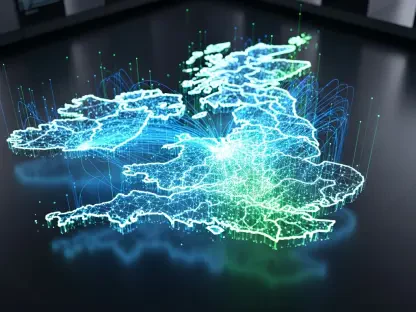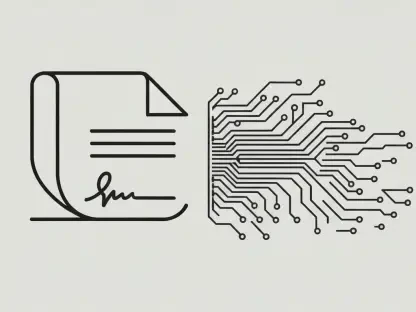In an age where technology keeps evolving, so does the landscape of criminal activities. Modern criminals are now using advanced tools to target businesses of all sizes, making crime insurance increasingly relevant. This article explores the importance of crime insurance in protecting businesses from both new and traditional threats.
The Evolution of Crime
From Physical Heists to Cyber Crimes
Criminal activities have shifted dramatically from physical heists to digital scams. Criminals today leverage advanced technologies like artificial intelligence (AI) and deepfake to orchestrate highly sophisticated frauds that can be difficult to detect. For instance, a Hong Kong multinational corporation found its finances exploited through a deepfake video call, resulting in a $25 million loss. Similarly, a prominent Dubai-based cryptocurrency exchange fell victim to a cyberattack, suffering staggering losses amounting to $1.5 billion. These high-profile incidents highlight the complex nature of modern cybercrimes and their devastating impact on businesses.
The transition from conventional crimes to cybercrime also encompasses the exploitation of digital communication tools. Cybercriminals utilize AI-generated emails to create convincing scams that can bypass traditional security measures. The relentless pace of technological advancement means that cybercriminals are continuously refining their methods, making it imperative for businesses to stay one step ahead. As Alex Doerflein from AmTrustCyber pointed out, companies that rely on transactions conducted by employees are particularly vulnerable to social engineering scams, emphasizing the need for comprehensive crime insurance policies tailored to modern threats.
Persistent Traditional Threats
Despite the surge in technologically driven crimes, traditional threats such as insider theft and fraudulent telephone transfers continue to pose significant risks to businesses. Modern technology has not rendered these conventional crimes obsolete; rather, it has enhanced the capabilities of criminals to conduct traditional crimes in more sophisticated ways. For example, phone scammers often use voice modulation software to mimic the voices of trusted individuals within an organization, thereby defrauding businesses out of substantial sums.
Another enduring threat is insider theft, where employees or trusted associates misuse their access to embezzle funds or steal sensitive information. This type of crime remains a formidable challenge for businesses as it exploits the inherent trust within the organizational structure. Consequently, businesses must remain vigilant and implement robust internal controls to detect and prevent such crimes. Regular audits and security protocols are critical in safeguarding against the dual threat of traditional and technologically augmented crimes.
The Business Impact
Financial Losses and Operational Disruptions
Cybercrimes can lead to significant financial losses and operational disruptions. When businesses fall victim to cyberattacks, the immediate financial damage can be substantial, affecting the bottom line and potentially threatening the organization’s survival. However, the impact of cybercrimes extends beyond the immediate monetary losses. Operational disruptions caused by cyberattacks can lead to prolonged downtimes, loss of productivity, and damage to the company’s reputation.
Business interruptions stemming from cyberattacks can have long-lasting effects. For instance, Ann Barry from Palo Alto Networks noted that 86% of successful cyberattacks caused notable operational disruptions last year, underscoring the shift from data theft to tactics specifically designed to disrupt business continuity. Such disruptions can undermine customer trust and result in significant financial setbacks. Given these stakes, the role of crime insurance in mitigating both immediate and long-term operational impacts is becoming increasingly prominent.
The Role of Robust Cybersecurity
Investing in advanced monitoring systems and skilled cybersecurity professionals has become crucial for businesses aiming to protect their operations from cyber threats. As cybercriminals continually evolve, businesses must adopt proactive measures to detect and respond to cyberattacks swiftly. The average detection period for cyberattacks has improved significantly, dropping from several weeks to just seven days, reflecting the value of investing in robust cybersecurity infrastructure.
State-of-the-art monitoring systems are designed to identify and neutralize threats in real-time, reducing the window of opportunity for cybercriminals to inflict harm. Skilled cybersecurity professionals play a pivotal role in interpreting the data generated by these systems, enabling swift and effective responses to potential threats. However, robust cybersecurity measures should be viewed as a complement to, rather than a substitute for, comprehensive crime insurance. While cybersecurity measures can help prevent attacks, crime insurance provides a critical safety net when preventive measures fall short.
Increasing Demand for Crime Insurance
Expanding Scope of Coverage
The demand for crime insurance is rising as cybercrimes become more sophisticated and frequent. Historically, large companies were the primary targets for cybercriminals, but this trend has shifted. Small and mid-sized businesses are increasingly finding themselves at risk, necessitating a more inclusive approach to crime insurance. Comprehensive coverage is essential to protect businesses of all sizes against a widening array of threats.
Insurance providers are expanding the scope of their policies to address the heightened risks faced by modern businesses. These policies now cover a broad spectrum of incidents, from cyber frauds to physical damage caused by criminal activities. As the risk landscape evolves, insurers are continually adapting their offerings to ensure they provide adequate protection against emerging threats. This flexibility and foresight are vital in helping businesses navigate an increasingly complex threat environment.
Insurer Adaptation
Insurers are not only expanding the scope of coverage but also adapting their policies to meet the specific needs of various industries. For example, businesses within high-risk sectors such as hospitality and retail are increasingly seeking insurance that covers physical damage resulting from criminal violence. Insurers are responding by incorporating such coverage into their crime insurance policies, thereby providing a holistic safety net for these vulnerable industries.
Insurers are also focusing on developing tailored coverage options that address the unique risks faced by different types of businesses. This approach ensures that businesses receive insurance solutions that are aligned with their specific risk profiles, enhancing their ability to recover from potential losses. As crime continues to evolve, the capacity of insurers to adapt their offerings will play a critical role in supporting businesses to remain resilient in the face of escalating threats.
Ransomware and Aggressive Threat Actors
The Rise of Ransom Demands
Even though the frequency of ransomware attacks has decreased, the ransom demands have escalated. Aggressive threat actors are becoming less willing to negotiate, often demanding higher sums from their victims. This change in strategy can be attributed to the perpetrators’ confidence in their capabilities and the increasing value of the data and systems they manage to access. Businesses victimized by ransomware often face a difficult dilemmpay the exorbitant ransom or risk losing access to critical data and systems.
The financial toll of ransomware attacks extends beyond the ransom payment itself. The costs associated with restoring data, rebuilding systems, and addressing any regulatory penalties can be substantial. Additionally, the disruption to normal operations can lead to significant financial losses, compounded by reputational damage. Effective crime insurance policies are therefore essential in providing financial protection and support during the recovery process, helping businesses to mitigate the detrimental effects of ransomware attacks.
Coverage for Physical Security
Businesses in high-risk sectors are increasingly seeking insurance that covers physical damage from violent crimes. This trend is indicative of the broader recognition that crime insurance must address a comprehensive range of potential threats. Industries such as hospitality, retail, and transportation, which are particularly susceptible to violent crimes, are driving the demand for coverage that extends beyond cyber threats. Crime insurance policies now include provisions that cover physical damages, offering businesses in these sectors a more holistic form of protection.
The inclusion of physical security coverage in crime insurance policies reflects the evolving nature of risks faced by businesses today. This comprehensive approach ensures that businesses are safeguarded against both cyber and physical threats, enhancing their resilience in the face of an increasingly diverse threat landscape. As businesses continue to navigate the complexities of modern crime, robust and inclusive insurance coverage will remain a vital component of their broader risk management strategies.
Importance of Prevention
Insider Threats and Employee Theft
Insider threats, including employee theft, remain a significant concern for businesses. The trust placed in employees and associates can sometimes be exploited, leading to substantial financial and reputational losses. Regular evaluations of cyber resilience and insurance coverage are essential in preventing and mitigating these risks. Businesses must implement stringent internal controls, conduct regular audits, and foster a culture of ethical behavior to minimize the risk of insider threats.
To address the issue of insider threats effectively, businesses should also invest in training programs that teach employees how to recognize and respond to potential security breaches. By increasing awareness and promoting a proactive stance against security threats, businesses can significantly reduce the risk of insider-related crimes. Additionally, comprehensive crime insurance policies that include coverage for insider threats can provide an additional layer of financial protection, ensuring that businesses are prepared to handle such incidents when they occur.
Sophisticated Cargo Theft
Cargo theft methods are becoming more deceptive and sophisticated. Criminals now use tactics such as fake bills of lading to steal goods, making detection and prevention more challenging. This evolution in cargo theft underscores the need for businesses to adopt advanced security measures and to invest in crime insurance policies that cover such specialized threats. The inclusion of comprehensive cargo theft coverage in crime insurance policies ensures that businesses are protected against these increasingly sophisticated forms of theft.
Businesses involved in shipping and logistics must prioritize the implementation of security measures that can help prevent cargo theft. This includes the use of advanced tracking systems, stringent verification processes, and secure transportation methods. Moreover, regular training sessions for employees on identifying and responding to suspicious activities can play a crucial role in preventing cargo theft. As cargo theft tactics evolve, the combination of advanced security measures and comprehensive crime insurance will be key in protecting businesses from significant financial losses.
Conclusion
In a time when technology is constantly evolving, so is the landscape of criminal activities. Modern criminals use advanced tools and techniques to target businesses of all sizes, making crime insurance increasingly necessary. It’s no longer just about traditional threats like theft or employee dishonesty; the digital age has ushered in a wave of new challenges such as cyber fraud, phishing scams, ransomware, and more. These sophisticated crimes can affect a company’s finances, reputation, and customer trust. Therefore, having a comprehensive crime insurance policy is vital. It protects companies from significant financial losses and provides a safety net that allows businesses to recover quickly from incidents. This article delves into the importance of crime insurance for businesses, highlighting how it can safeguard against both new and traditional threats in today’s technologically driven world. By understanding the value of crime insurance, companies can better protect themselves from evolving criminal tactics, ensuring continued security and stability.









